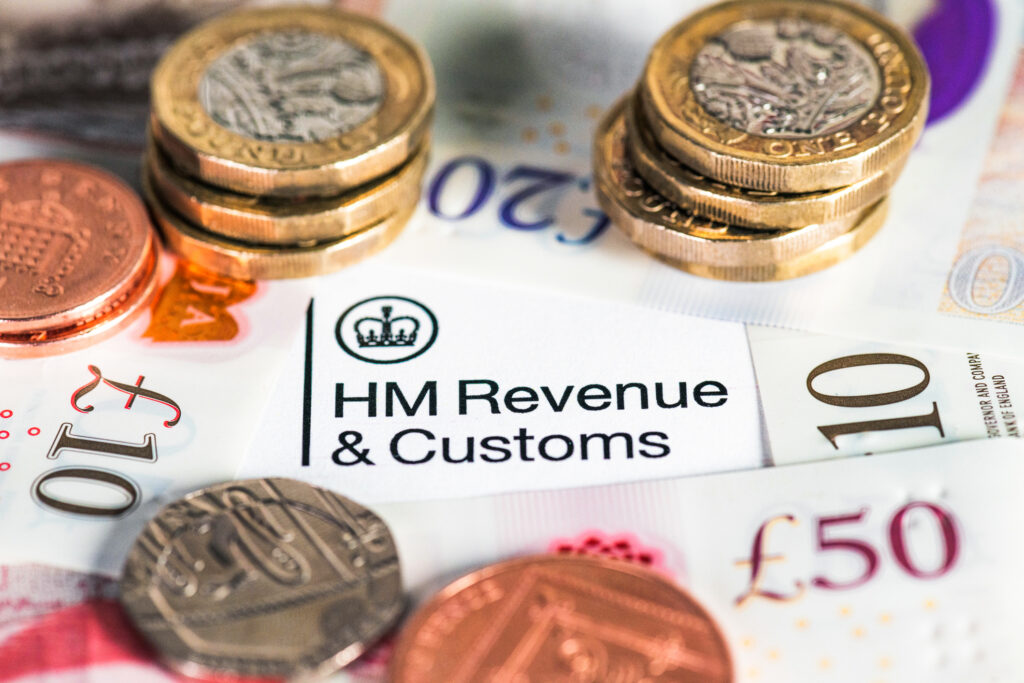Nine things to know ahead of the new tax year

A collection of modern British banknotes surrounding the HM Revenue & Customs heading on a UK Government tax form.
The latest insight from finance experts, RIFT, has looked at what you need to know ahead of April’s end of tax year deadline, as the total number of income tax receipts received by HMRC has climbed by an average of 5.7% every year for the last decade.
The financial year ends on the 5th April, meaning that any new tax rates or allowances come into play from 6th April as the new financial year begins and changes from the Spring Budget are implemented.
We’re paying HMRC more tax
Analysis of Gov data by RIFT has shown that we are paying more tax than we have in the last decade, with total Income Tax Receipts received by HMRC totalling £268m in 2023, having increased at an average annual rate of 5.7% since 2013.
With a number of changes due to be made that impact both individuals and businesses alike, this year could be a particularly busy one for HMRC when it comes to those looking for help and advice, with the month of April already putting a stretch on its resources when compared to other months.
April a busy time for HMRC helpline
In fact, Gov data shows that over the last three years (2021 to 2023), the average number of calls made to the HMRC tax helpline during the month of April sat 12.8% above the monthly average for the rest of the year.
As a result, the average waiting time in April has also been some 25% longer than the monthly average seen over the rest of the year.
For those who might be worried about what changes are set to be implemented and how they might be impacted, RIFT has highlighted the nine things to be aware of as we head towards the 2024/25 tax year.
National Insurance Contributions (NIC)
As of 6th April, the main rate of Class 1 employee NICs will fall from 10% to 8%, and alongside the previous cut in the Autumn Statement this provides an overall 4p tax cut for an estimated 27 million people. Working families with two earners each on an average salary will receive a gain of over £1,800.
Meanwhile, Class 4 self-employed NICs will fall from 9% to 6% and this is expected to benefit over two million self-employed tax payers. Together with previous changes, the 3p reduction in the main rate of Class 4 and the abolition of the requirement to pay Class 2, this will save an average self-employed worker on £28,000 an estimated £650 a year from April 2024.
National Living Wage and National Minimum Wage Changes
Both the National Living Wage and the National Minimum Wage are set to increase from the 1st April this year. The current rate (for 23 year olds and over) is £10.42, and this is set to rise by 9.8% to £11.44. What’s more, the National Living Wage will be extended to both 21 and 22 year olds – this means it is expected that nearly three million people will benefit from the rise in the national living wage.
Dividends Allowance Reductions
Dividend income tax rates will remain as they are for the 2024/25 financial year, however, the dividends allowance is reducing from £1,000 to £500 as of the 6th April. This reduces the tax-free allowance for dividend income and it is estimated that this will affect 4,405,000 individuals in the year 2024 to 2025. Although 27% of those with taxable dividend income will be unaffected by this measure in the year 2024 to 2025, the average loss of those that are affected is expected to be around £155 in the tax year 2024 to 2025.
Business Rates in England
Business rates across England, or more specifically, the business multiplier, will remain frozen for another year as of 1st April.
Pension Lifetime Allowance Abolished
From 6th April, the Pension Lifetime Allowance will be abolished, with changes being made to clarify the taxation of lump sums and lump sum death benefits. For the average person saving into a registered pension scheme there will be an increase in tax-free lump sum entitlements.
Capital Gains Rates
For the upcoming financial year, the capital gains tax allowance is being halved from £6,000 to £3,000 for individuals and personal representatives, although different rules apply for trustees.
This reduction in allowance will mean that individuals with gains in excess of the current allowance will pay more capital gains tax, while by 2024 to 2025 an estimated 260,000 individuals and trusts will be brought into the scope of capital gains tax for the first-time. For certain investors, such as buy-to-let landlords in England and Wales, the tax-free allowance drop to £3,000 means that their capital gains tax bill could rise by an estimated £2,610.
ISA Limits Freeze
Limits on ISAs will remain frozen in 2024/25, meaning that the average person can invest up to £20,000 into ISA savings products without paying any tax. The average ISA investment is estimated to sit at £5,696 (£4,330 for a Cash ISA; £8,690 for a Stocks and Shares ISA; and £8,520 for an Innovative Finance ISA).
However, new changes will allow multiple subscriptions to ISAs of the same type within the same year, while savers will also be able to make partial transfers between providers within the same year. This will allow savers to benefit from the varying degree of returns, with the average interest rate of a Cash ISA sitting at 2.43% (variable) or 4.51% (1 year fixed), while IFISAs offer rates on average between 4%-10%.
Research and Development Merging with SME Schemes
For those who claim R&D tax relief, the Research and Development Expenditure Credit scheme will be merged with SME schemes from 1st April, meaning an expenditure incurred will need to be claimed via the merged scheme.
Tax refund deadlines
Did you know you may be owed money by HMRC if you have overpaid on your taxes? You can reclaim any taxed owed from the last four tax years, however, if you don’t make a claim within the time limit the tax year becomes closed to claims.
In relation to the upcoming deadline, refunds for the tax year 2019/20 (year ended 5th April 2020) must be claimed by 5th April 2024. You have a little more time for subsequent years, for example the tax year 2020/21 (year ended 5th April 2021) must be claimed by 5th April 2025.
If you miss the deadline, it is possible that HMRC could agree to issue repayments for previously closed years under the “Extra-statutory Concession B41” – but only in cases of “official error”. It is rare for HMRC to grant this, and it only applies in situations where HMRC (or other government departments) have made an error and there is also clear evidence of this error. Long story short, don’t miss the deadlines.
Bradley Post, MD of RIFT, commented:
“For most of us, the end of the financial year comes and goes without much thought and any changes to our personal financial situation aren’t noted until we get our next pay slip, or we talk to our accountant.
However, this year there are a raft of changes due to be implemented that will impact everyone from those in full-time employment to the self employed – some positively, some not so positively.
For those who might be in need of advice, be warned, you may struggle to receive it from HMRC in a timely manner.
While the decision to shut the HMRC tax helpline from April was reversed last week, figures show that over the last three years, the volume of calls received in April sits around 13% higher than the monthly average seen throughout the rest of the year.
What’s more, the average speed of answering these calls has also sat some 25% higher during April when compared to the annual average seen over the rest of the year. So if you are in need of help and advice, you’re best advised to seek it sooner, rather than later.”




